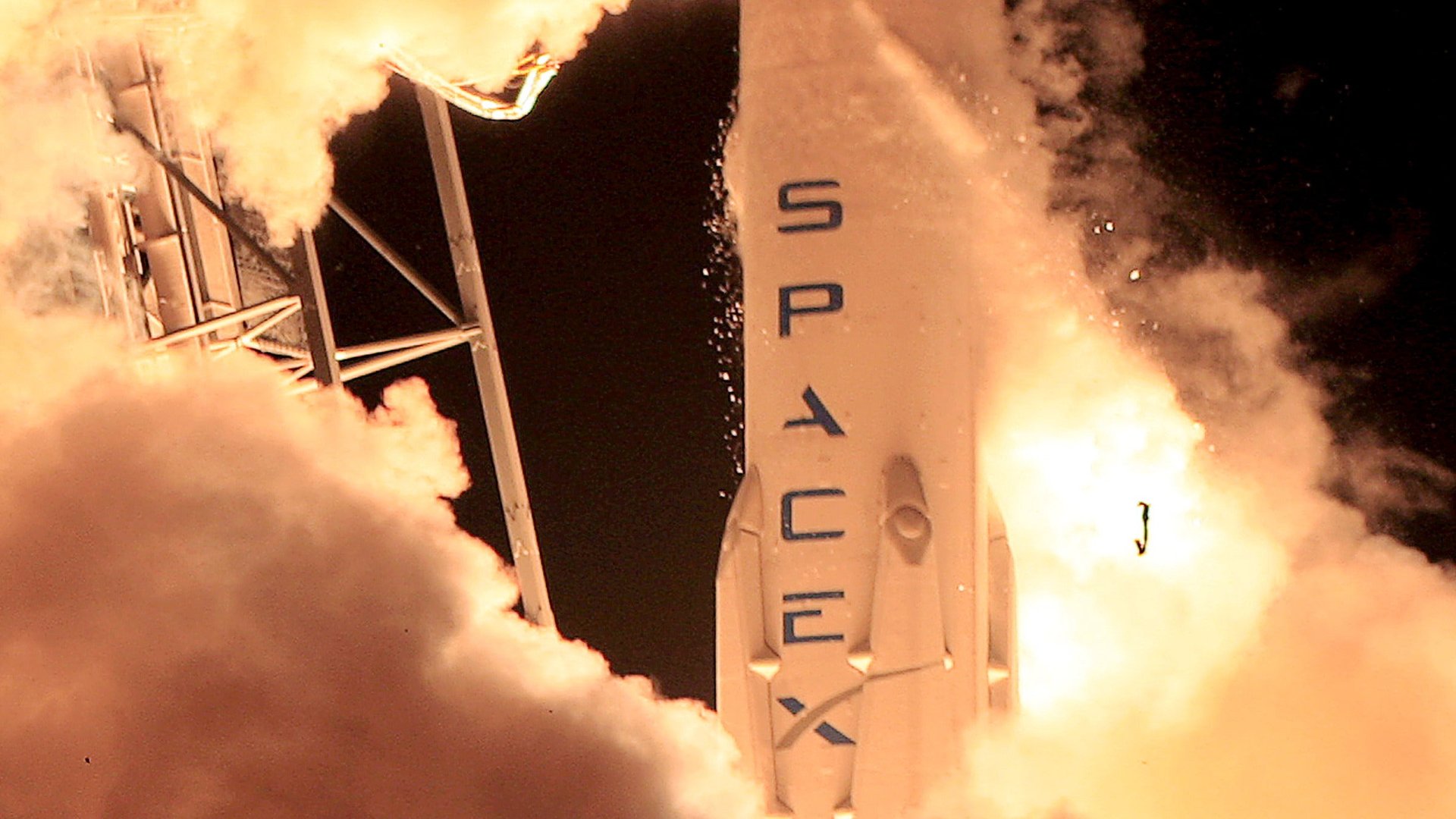SpaceX’s rocket landing is a big moment for Elon Musk—and for the economics of the space business
By launching a cargo of satellites into orbit and returning the rocket booster to a vertical landing on earth, Elon Musk’s SpaceX has reached the next major milestone in its quest to reduce the cost of reaching space, with the potential to disrupt the entire rocket industry.


By launching a cargo of satellites into orbit and returning the rocket booster to a vertical landing on earth, Elon Musk’s SpaceX has reached the next major milestone in its quest to reduce the cost of reaching space, with the potential to disrupt the entire rocket industry.
The launch last night (Dec. 21) of a modified Falcon 9 rocket carried higher expectations than usual: It was SpaceX’s return to flight for the first time since an explosive mishap six months ago—and the company still needed to then safely land the rocket booster at Cape Canaveral.
After touchdown, Musk raced to the landing pad, where he shared a video that shows you the scale of this rocket:
Typically, most rockets are discarded after flight, burning up in the atmosphere or falling into the sea. This waste contributes to the high cost of orbital access.
SpaceX has already proven itself a real competitor to aerospace giants, offering the cheapest prices to reach low-earth orbit—at about $60 million per launch—thanks to its focus on simple design, cheap materials, and advanced manufacturing techniques. But the ability to reuse their rockets could cut tens of millions, if not more, from that number. Not only will that make the company more competitive in bidding for traditional launch cargos of large satellites from governments and major satellite operators, but it could make hitherto cost-prohibitive schemes a reality, the same way the falling cost of microprocessors opened up new business opportunities.
One trendy example is the idea of putting a new constellation of satellites—as many as 700 of them—in low-earth orbit, providing internet connections on the ground. Remember there are 1,300 satellites orbiting earth right now, so proposing to add several hundred more is no small expansion. Both SpaceX and a company called OneWeb are planning this kind of ambitious satellite effort, but the cost of launching so many satellites is a major impediment.
Reusable rockets could make that kind of business model a reality, lowering launch costs to the point where the inherent risk in a satellite business is manageable, and bringing kooky-sounding ideas like asteroid mining, space debris mitigation, and, yes, space tourism, further within reach.
NASA had essentially given up on a reusable rocket once the Space Shuttle program ended. The shuttle, you’ll remember, took off vertically but landed horizontally like a plane. The expense of refurbishing it in between launches made the space agency look toward so-called expendable launch systems, as it began funding public-private partnerships with SpaceX, Orbital ATK, and Boeing to develop a replacement for the iconic vehicle.
But NASA’s assignment was merely one step in Musk’s overall goals of lowering the cost of space access. Booster reusability became the company’s holy grail once the Falcon 9 rocket was proven.
Still, there are obstacles. SpaceX still needs to demonstrate the ability to consistently produce and launch rockets many times a year after the June accident caused an unexpected, six-month setback, something it will do with several flights planned for the weeks ahead. Conversely, launch operators need to be convinced of the reliability of these reused rockets. Orbcomm was reportedly reluctant to see SpaceX test its rocket landing system during its return-to-flight.
Nonetheless, the company pressed ahead, goaded in part by the success of Blue Origin, the space company founded by Amazon’s Jeff Bezos, in vertically launching and landing its New Shepherd rocket booster last month. While Musk diminished Blue Origin’s accomplishment at the time, noting that the much smaller New Shepherd did not fly as high or as fast as the Falcon 9, he clearly wished to be the undisputed rocket champion.
And though Bezos offered some twitter snark of his own with a congratulatory message that also read “welcome to the club,” there’s no mistaking the state of the space industry: Now that Musk’s company has performed the first operational landing of a vertical rocket booster, the ball is back in Bezos’ court.